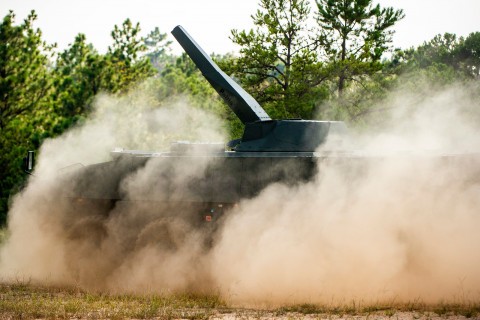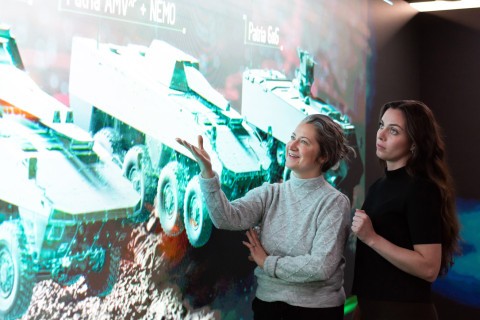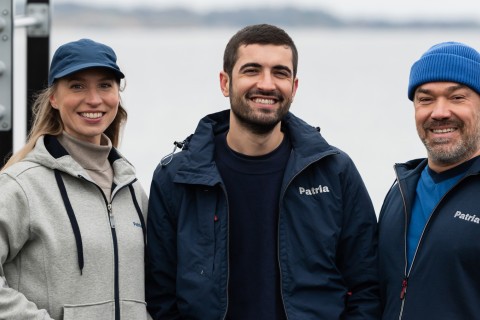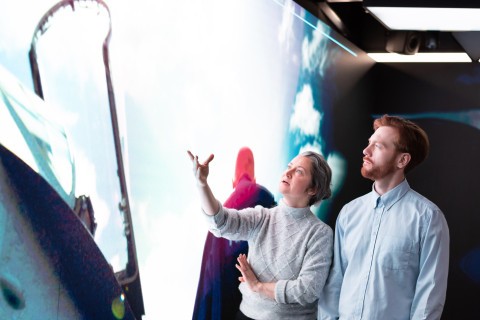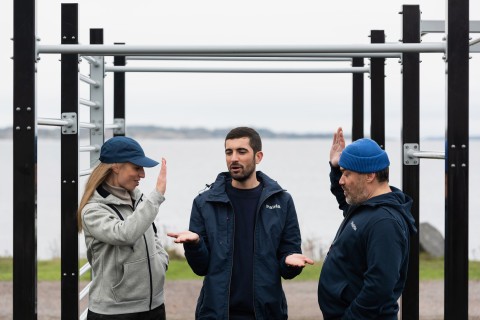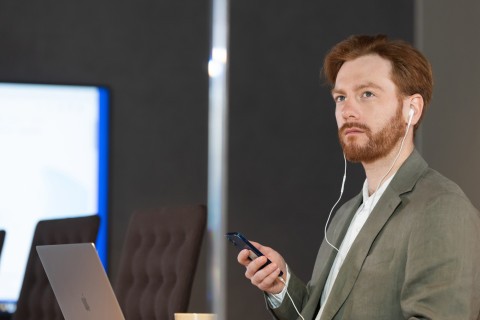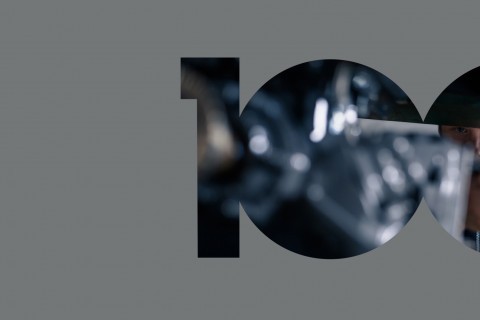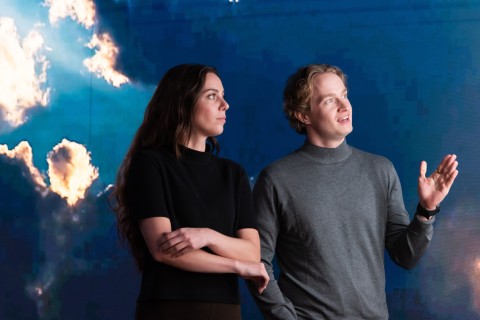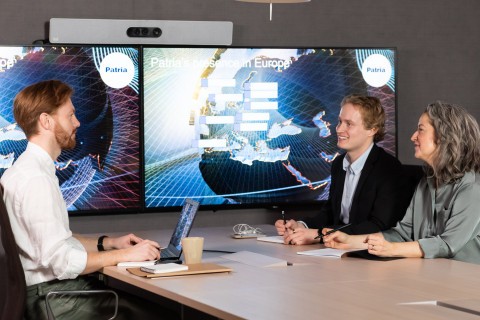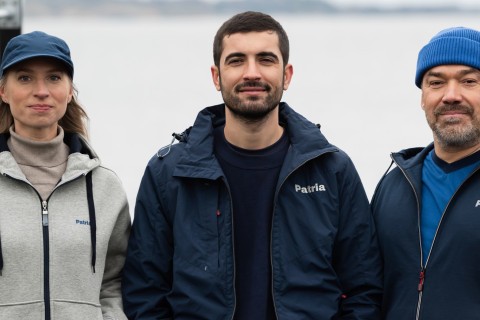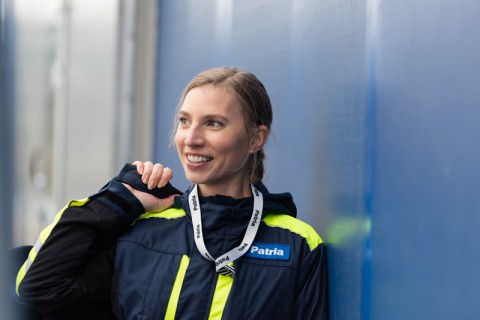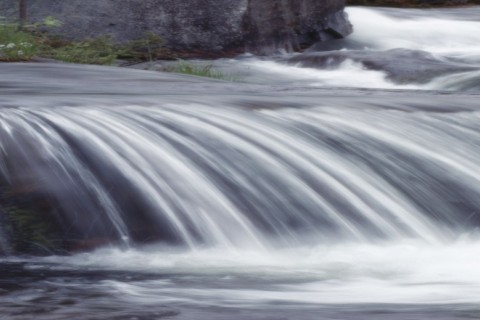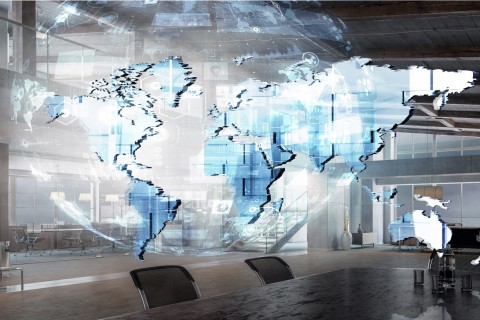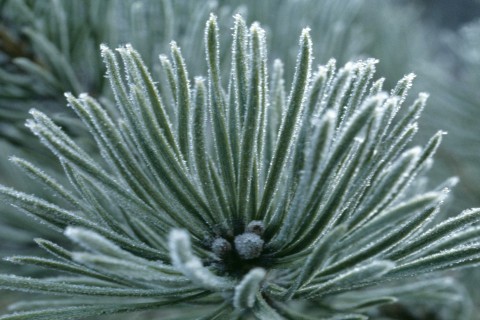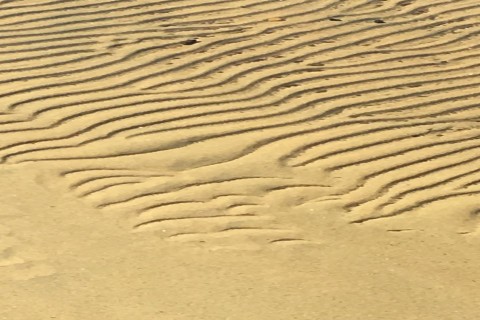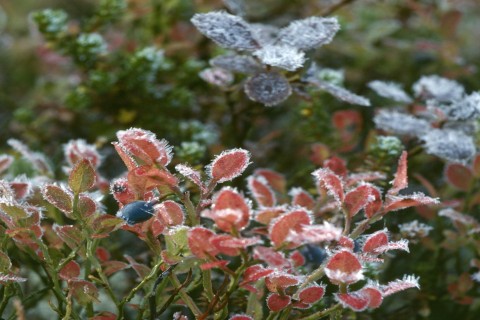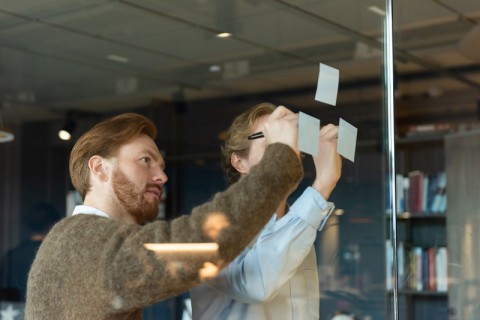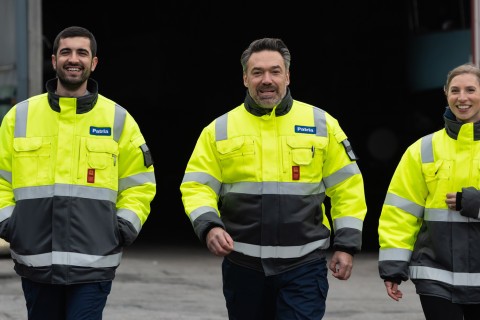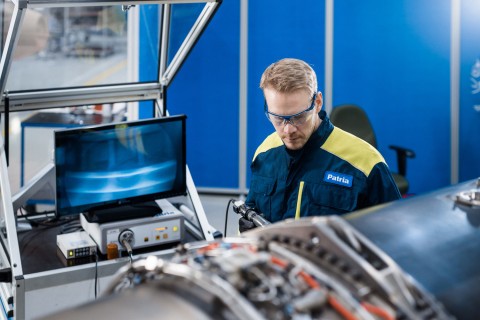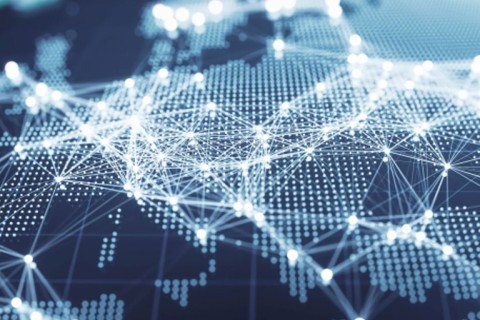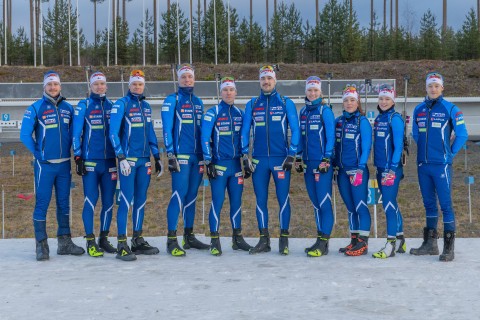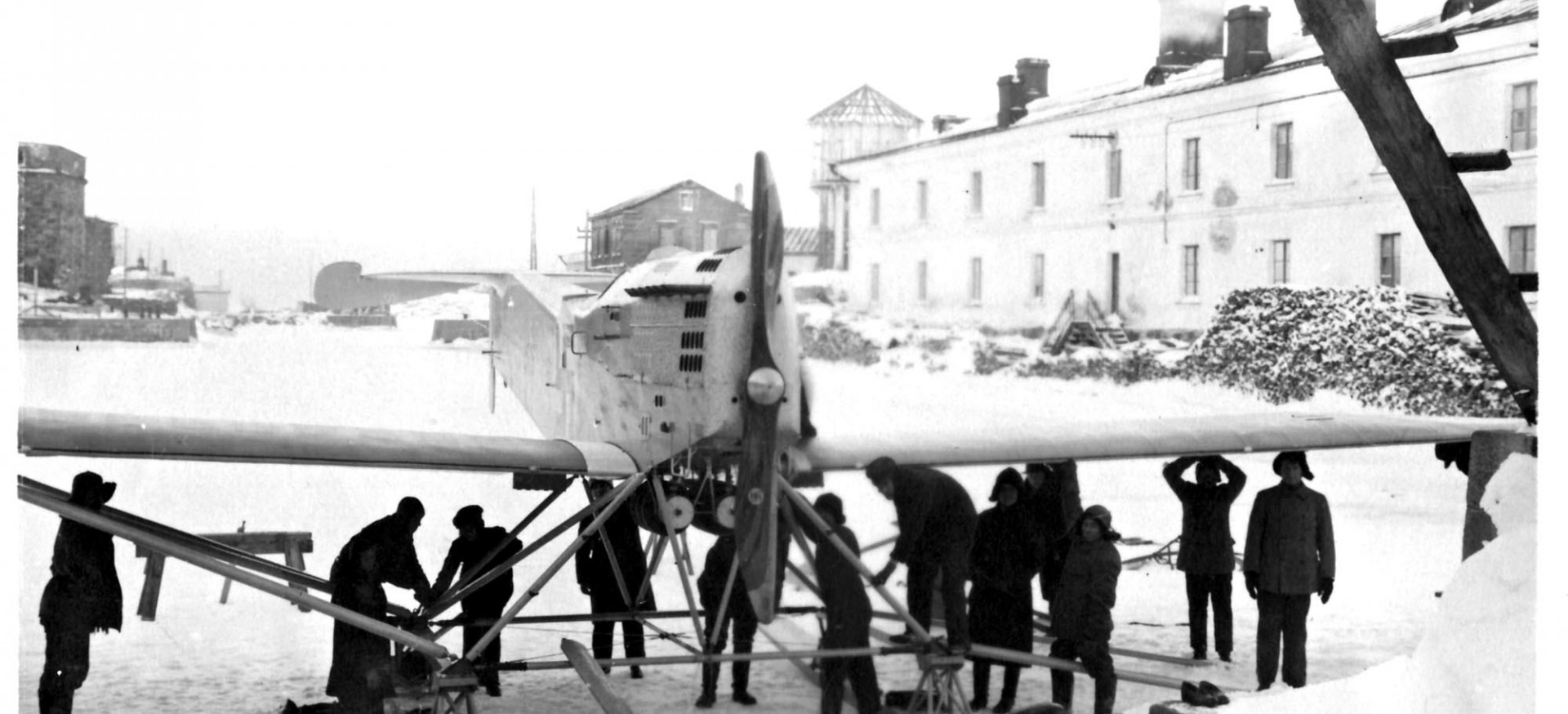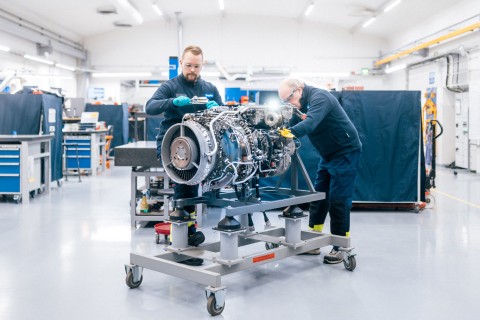
5.12.2017
Finland gained independence in 1917 and is now celebrating its centenary. Patria is almost the same age and has developed alongside independent Finland, supporting the overall security of the state.
Today, Patria is a trusted life cycle services and technology solutions provider in the defence, security and aviation sector. The company supports the overall security of society in areas such as security of supply and in its role as a strategic partner of the Finnish Defence Forces. Patria’s success is based on solid experience acquired over decades, technological expertise and continuous development of operations.
Air Force Aircraft Factory is founded
The history of Patria begins in 1921. In that year, an aircraft factory named “Ilmailuvoimien Lentokonetehdas” (”Air Force Aircraft Factory”), was founded in Suomenlinna, an 18th century fortress off Helsinki. First it manufactured Hansa-Brandenburg aircraft under a licence. Seven years later, the name of the factory was changed to “Valtion Lentokonetehdas” (”State Aircraft Factory”)
Photo: Patria heritage begins as an aircraft factory was established in Suomenlinna in 1921. At that time, the aircraft were mainly based on wooden constructions coved with fabric.
Mortars for the Finnish Defence Forces
Patria’s history as a mortar manufacturer dates back to 1930s, when a Finnish company called Tampella began to design and manufacture mortars for the Finnish Defence Forces. Photo: In 1933 mobility of the mortar was based on a horse-carried model by Friitala.
Aircraft factory is built in Halli, Kuorevesi
In 1940, an aircraft factory was completed in Halli, Kuorevesi, a locality in central Finland. Today, Halli remains an essential part of Patria, with over one thousand employees engaged in aviation-related activities. Photo: In the 1940s the Aircrat Factory was moved to Halli from Tampere.
Specialisation in vehicles
Patria’s specialisation in vehicles began during the Continuation War, when a need of vehicle production was intensified. In the early stages of vehicle production, the Vanaja factory manufactured buses, trucks, tractor-trailers, carriages, crane platforms and articulated buses among others. Photo: In 1940-50 Patria manufactured buses, trucks and trailers at the Vanaja vehicle factory for the versatile needs of the post-war Finland.
Helicopter and aircraft assembly
In the 1960s, the Halli factory saw the assembly of Fouga Magister jet trainers; in the 1970s, Draken interceptors were made there. This was followed by the assembly of Hawk jet trainers in the 1980s and Hornet fighter in the 1990s. In addition to Hawks, Vinka and Redigo basic training aircraft were manufactured in the 1980s. From 2003 onwards Patria assembled NH90 helicopters to Finnish and Swedish Defence Forces. Patria, during the course of its history has designed and manufactured more than 300 original aircraft and more than 600 under a licence. Patria’s own production ended in 1995 after which operations concentrated on assembly, maintenance, repair and modification.
Military vehicles
The focus in vehicle know-how shifted towards military vehicles. In the 1970s, the new terrain truck A-45 was introduced. It was called Proto due to its nick name in prototype phase; in the 1980’s its successor was SA-150. Its name was Masi (Maasto-Sisu which is Finnish for ”off-the-road Sisu”). Photo: In the 1960s vehicle manufacturing continued and Patria’s vehicles were used by peace-keepers, among others.
Serial production of Pasi armoured vehicles begins
Serial production of armoured wheeled vehicles began in 1984, when XA-180 or ”Pasi” (Panssari-Sisu which is Finnish for Armoured Sisu) was put into production. With over 1,300 manufactured vehicles to Finland, Sweden, Norway and the Netherlands this vehicle type made Finnish know-how known internationally.
Development of turreted mortars begins
In the mid-1990s, Vammas Oy – later a part of Patria – commissioned a survey on the future of mortar weapons. The survey found that the future of the mortar will be in turreted systems mounted on wheel or tracked vehicles. Based on this information, Patria and Hägglunds developed the double-barreled AMOS mortar systems. In 2006 Patria introduced the single barreled Patria Nemo. Photo: AMOS mortar system was developed in the 1990s, AMOS PT1 vehicle XA-203.
State consolidates the Finnish defence industries
Patria’s present form is a result of numerous transitional phases and mergers. An important step towards a unified Patria was taken in 1997, when the state of Finland consolidated a substantial part of the Finnish defence industry, creating Patria. In the same year, Patria expanded its competencies to underwater surveillance systems and space electronics, by acquiring a unit for developing these in Tampere.
Strong player in defence, security and aviation (2000s)
At present, the armoured wheeled vechile Patria AMV is one of Patria’s main export products. The company currently holds contracts for more than 1,600 vehicles. Today, production in Halli includes life-cycle support services for the Finnish Air Force Boeing Hornet F-18 multi-purpose fighters, and Hawk jet trainers. Similar services are being produced for NH90 helicopters in Halli and Utti. Patria strengthens its role as a significant helicopter life-cycle support provider in the Nordics. Patria has provided the Finnish Air Force with basic military pilot training since 2005. Systems offers comprehensive software-intensive system and equipment deliveries to defence forces and security authorities. Areas of special expertise are intelligence, surveillance and command and control systems, as well as their integration, software and life-cycle support. Photo: Patria was the prime contractor in the upgrade of the Finnish Rauma Class Fast Attack Crafts. Photo: In the 2010s Patria’s System business unit has developed ARIS, an Advanced Realtime Intelligence System.
What did you like about the article?
Thank you for your opinion! You can share the article on social media using the buttons below:
